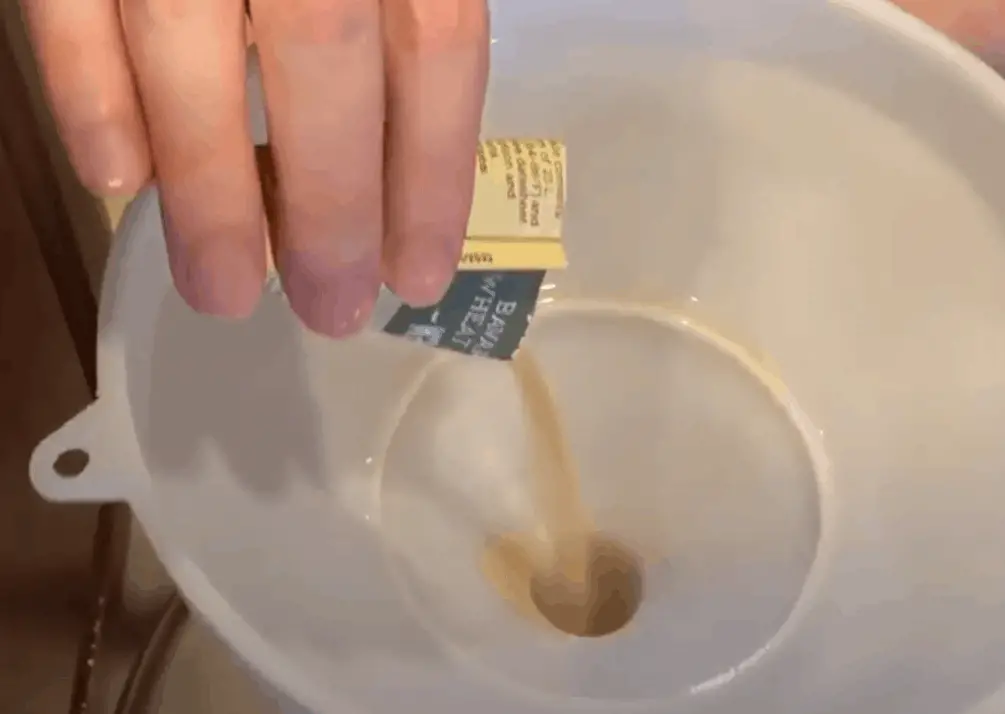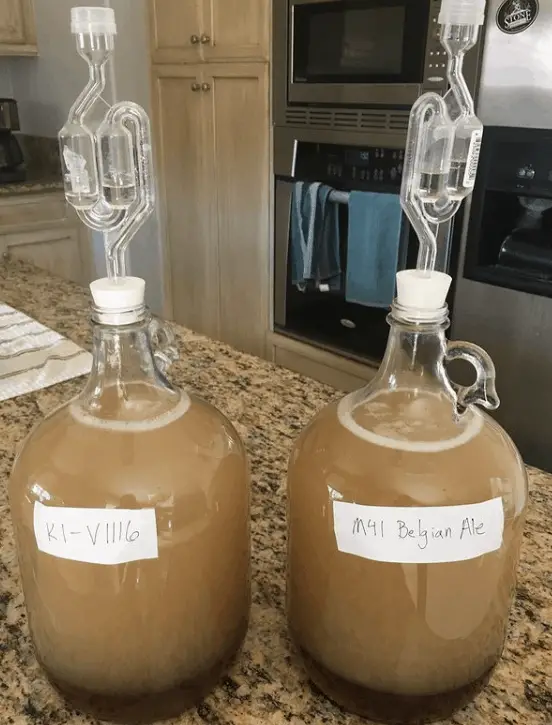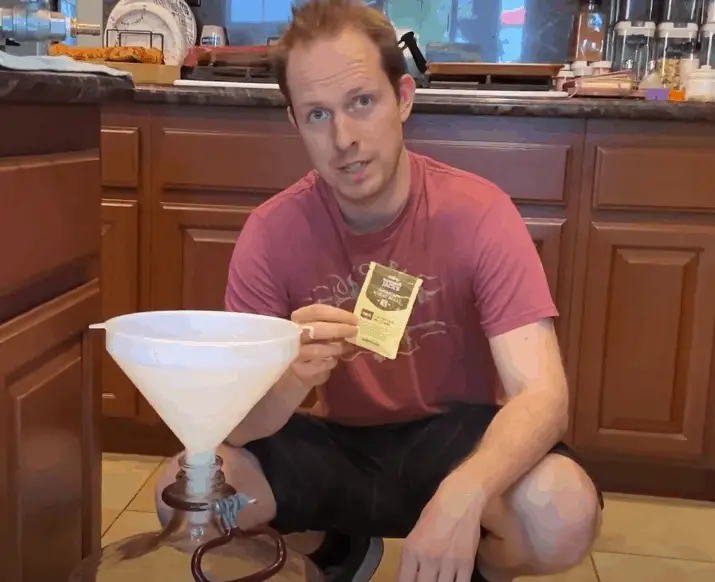
It’s common practice to rehydrate dry yeast before pitching it into your beer. In fact there are yeast starter kits that help with this process. But, did you know you don’t need to rehydrate the dry yeast?
Dry yeast does not need to be rehydrated before use. The labels say it can be sprinkled directly on the wort. Often dry yeast contains more cells per package than liquid yeast and is cheaper. Expired dry yeast should be rehydrated to check viability.
So if you don’t need to rehydrate dry yeast why do so many people do it? Well there are some benefits to rehydrating your yeast which we will cover below. But, dry yeast technology has gotten better of the years which has led to the ability to directly pitch into your wort.
Dry Yeast and Why You Don’t need to Rehydrate
It could be that dry yeast doesn’t need to be hydrated these days because the technology has improved. We can now create dry yeast without hurting the yeast so much much in the process.
This makes it much more likely that any attempt to rehydrate it in a more aggressive way, like sprinkling over wort will result in the same outcome as adding it to warm water.
The Difference Between Warm Water and Wort
Dry yeast is often said it needs to be rehydrated for best results. But what exactly is the reason for this?
It all comes down to the stress of the yeast. If you are not pitching the yeast in the perfect environment a few things can happen.
- Yeast cells can burst causing yeast death.
- Yeast cells won’t have enough nutrient or improper nutrient balance.
- Yeast cells may mutate and cause flavors other than what you are aiming for.
Most of these problems mentioned above are really not too much of a concern when pitching lab grown yeast. This yeast is meticulously measured and has grown in the most perfect environments.
Its when you are trying to keep your own yeast over multiple generations where the above becomes a problem. Aside from yeast cells bursting and dying, which is unique to dry yeast becoming rehydrated. Brulosophy covers yeast cell death in one of their experiments.
But, cell bursting isn’t too much of a problem since dry yeast has more yeast cells than liquid yeast that takes into account yeast death. It also can be rectified by pitching even greater amounts of yeast. Read my article on overpitching yeast if you want to learn more.
Reasons You May or May Not Pitch Dry Yeast Directly
There are a number of things to consider when pitching yeast dry that may change your mind on whether or not you want to pitch it dry. These include:
- How much wort you are pitching the dry yeast into. 1 Gallon batches require less yeast cells.
- What the gravity of the wort you are pitching the yeast into is.
- How much you want to stretch your dollar by growing enough yeast for two pitches from one package.
- If the dry yeast is past its expiration date.
What all of these considerations have in common is yeast quantity. Essentially yeast pitch rates are the most important factor when creating consistent and delicious beer.

If you underpitched yeast cells or overpitched yeast cells it will cause off flavors. So when it comes to 1 gallon batches one package of yeast is more than enough to get the job done, in fact if you rehydrate your yeast you may even be in danger of overpitching, although that’s still unlikely. Its far easier to under pitch.
Yeast Starters vs Yeast Rehydration
Yeast rehydration and starters differ in really only one way. The goal of starters is to grow the number of yeast cells before pitching to reduce stress. While yeast rehydration does not set out to increase yeast cell counts.
Yeast starters add sugar often DME to the warm water while yeast hydration does not.
This is interesting and sort of puts our goals into perspective. If we are trying to give our yeast more of a fighting chance against a greater quantity of wort and gravity a yeast starter makes a lot of sense.
But, does yeast rehydration make any sense at all? In my opinion not at all. If you’re going to be so worried about yeast cell counts then you might as well go the extra mile and make a starter.
The only reason to not make a start would be to save money, which on a homebrewing scale is a miniscule price difference.
Lag Phase and Dry Yeast
The lag phase refers to the length of time it takes for the yeast to transition into a metabolic state where the yeast begins to consume sugars and the fermentation begins.
Lag phase can be anywhere from a few hours to an entire day. It is important that the lag phase does not exceed a day since bacteria can take hold and ruin your beer.
Dry yeast has a longer lag phase especially when pitched directly into wort without being rehydrated. This is something to consider when pitching yeast dry. However, I recently pitched two different dry yeasts directly into 1 gallon of must for my mead and both took only 12 hours to emerge from the lag phase.

Its important to note that this is mead must and not wort, but this is actually a much more nutrient deficient environment than wort. But, overall the effect is the same, dry yeast did not need to be rehydrated prior to pitching.
How to Rehydrate Dry Yeast

Step one: Pour directly into your wort. I only joke of course, while that is of course one way to rehydrate the proper way to rehydrate is as follows.
- Add Yeast to 1 cup of warm water around 95-100 F.
- Add a small amount of sugar or DME. 1 tsp.
- Cover and keep out of sunlight.
- Pitch after 30 minutes.
Note: Water temperatures may differ depending on the yeast strain. Lager yeasts should be rehydrated at lower temperatures.
For more information check out How to Brew.
Rehydrate Before Making a Starter?
If you plan on making a starter you can either rehydrate your yeast gently first or add it to some sugary wort. Either way works fine, but the same issues talked about above apply if your are adding directly to wort. Some of the yeast might die in the rehydration process.
To have a better chance of getting some really good yeast or high cell counts to pitch into your beer some companies have developed starters that are well suited to growing yeast.
For example the below starter has been gaining popularity.
You can also of course use DME which is much cheaper alongside a starter system.
Liquid vs Dry Yeast and Brewer Skill Level
When it comes to rehydrating dry yeast it really depends on the brewers skill level. You can easily save time and money by pitching dry yeast directly.
It will not have any truly noticeable detrimental effects on your beer. At the end of the day you will have made beer that you can enjoy. But, to truly make the best beer it is difficult to master. It requires strict adherence to pitch rates.
These pitch rates can be controlled in a number of ways discussed above. Either by making a starter, rehydrating your yeast or even moving to liquid yeast.
Liquid yeast is more expensive than dry yeast but as the name often implies they offer perfect pitch rates. These pitch rates may differ according to the gravity of your beer but overall the cell count will be consisted and cell death is low.
Now get out there and brew some beer!
